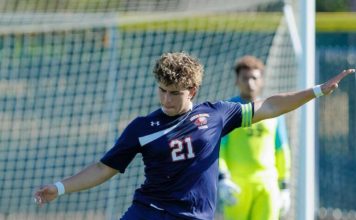GILROY
– Ideas for improving the city’s downtown – besides through
millions of dollars in streetscape improvements – will be the focus
of another City Council study session this week.
GILROY – Ideas for improving the city’s downtown – besides through millions of dollars in streetscape improvements – will be the focus of another City Council study session this week.
Council will hold its second special meeting Wednesday night to talk about how to help drive improvements to Gilroy’s historic downtown area. With a decision on financing the $4.1 million Monterey Streetscape Program and other city infrastructure needs likely delayed for months, officials say this week’s discussion will probably be more about general concepts than themes such as engineering and overall municipal finance that have dominated past sessions.
Instead, the focus of Wednesday’s meeting will be a general review and discussion of a “soft-list” of different ideas for the downtown tapped from the Council, organizations such as the Chamber of Commerce and Downtown Association and submitted to the city by Councilman Al Pinheiro.
Ideas on the list range from waiving permit fees to implementing a so-called “business improvement district” to creating new and increased promotional partnerships among businesses.
“It won’t be so much about infrastructure as about things brought up in the (list),” Baksa said Tuesday. “We’ll just start talking about those, and if the Council has interest in some, we’ll staff them out and let them know the ramifications of those things. We’ll just work through the list.”
The study sessions are the result of the last Council retreat in September,when it became apparent that one option seen to fund potential downtown improvements – a newly activated redevelopment district – would not receive enough Council support to become reality.
The city is still looking for money to complete $4.1 million in improvements to the downtown streetscape that many downtown leaders feel are crucial to improve conditions and appearance for shoppers there and provide incentive to spark investment.
The plan, adopted in 2000 after a series of public meetings, is designed to lure pedestrians downtown by making the area more comfortable. It would widen sidewalks along Monterey Street between Third and Seventh streets and replace the snake-like traffic strip with a straight, landscaped center median.
The city has made some progress, completing roughly $2 million in renovations between Seventh and Eighth streets with the help of a state grant and landing another $1.4 million from the state for an estimated $1.6 million of work between Sixth and Seventh due for completion next year.
However, officials say they’re less likely to land similar large grants for the rest of the project after being awarded two already, and there is no city funding allocated for the next phases of the plan.
Pinheiro has pressured officials and the Council to keep focused on downtown revitalization over concern that the streetscape and other improvements would take years to get done under current funding approaches.
But preliminary budget projections produced by city officials have forecast that funds are already tight or nonexistent to fund increasing employee costs or planned services such as staffing for new city fire stations – let alone debt service needed to bond for the streetscape.
Meanwhile, the streetscape program would compete with millions of dollars in other unfunded liabilities identified in years past, including $3.5 to $4 million in sidewalk repairs, more than $9 million in street repairs and an $18 million storm drainage program.
Council discussed the possibility of bonding to fund the improvements at an initial downtown infrastructure study session last month, Baksa said, but agreed to wait for the results of additional budget analysis due out this spring before making a final decision on a bond.
“You can’t make some of those infrastructure dollar decisions until you know what the General Fund is going to look like,” Baksa said, referring to the city’s pot of discretionary money. “But at least now everyone’s getting in tune.”
Meanwhile, Pinheiro said the kinds of issues slated for discussion tomorrow are important, – likening them to spokes on a downtown “wheel” – and expects a good turnout.
“You have spokes on this wheel in order for it to turn and come to fruition,” he said. “It doesn’t make sense to commit millions of dollars if you don’t get input from the people who will be impacted the most, bring them to the table and (become) partners to do this.”













